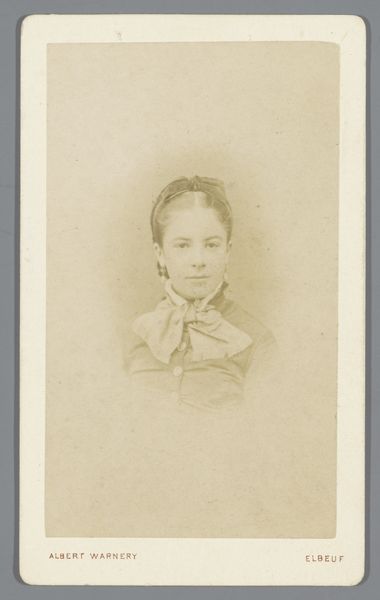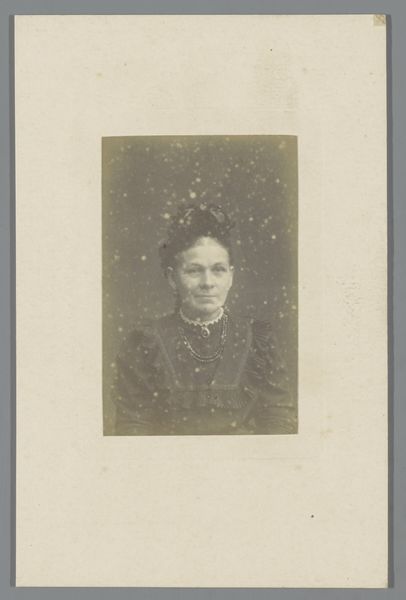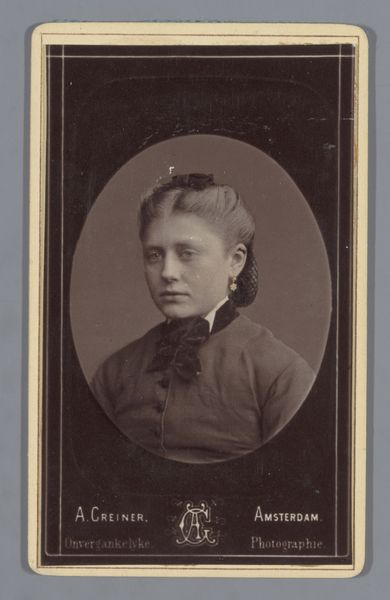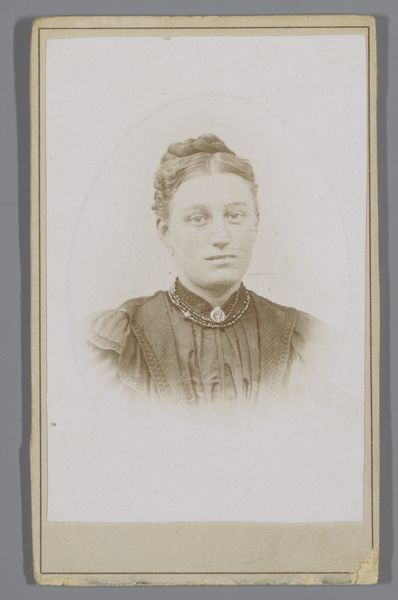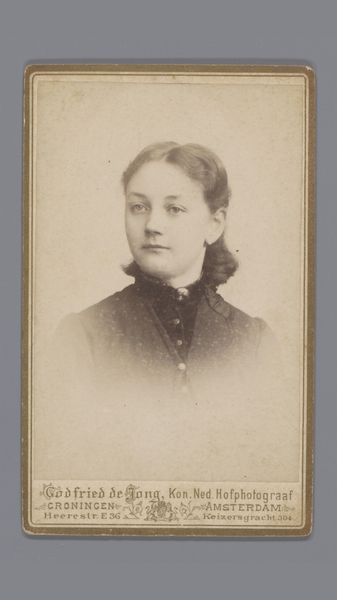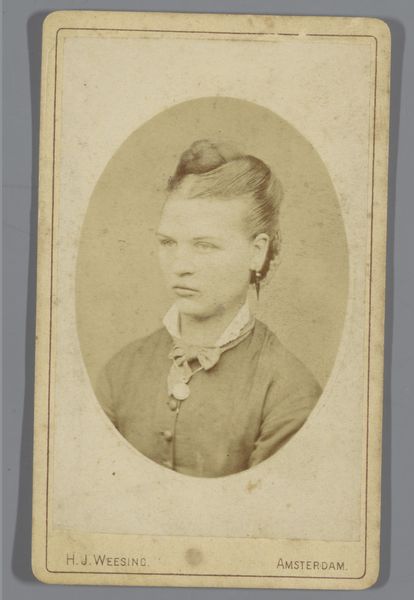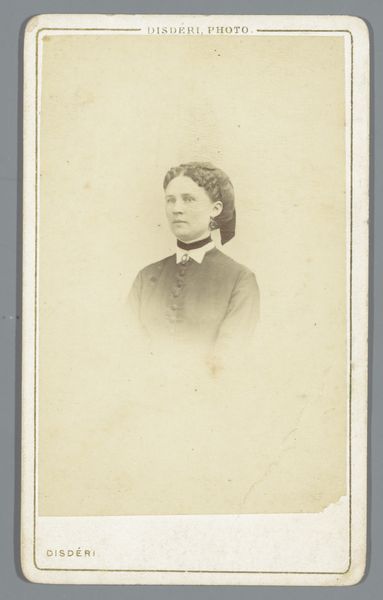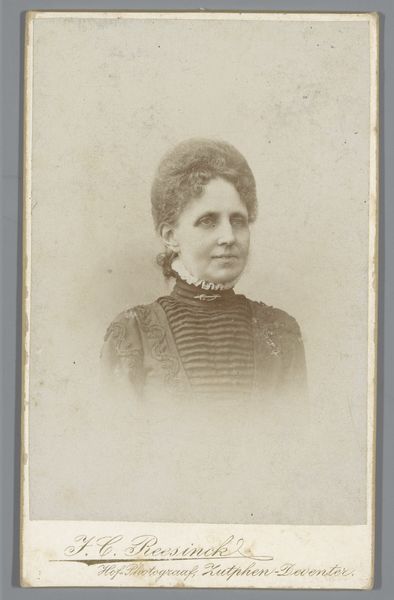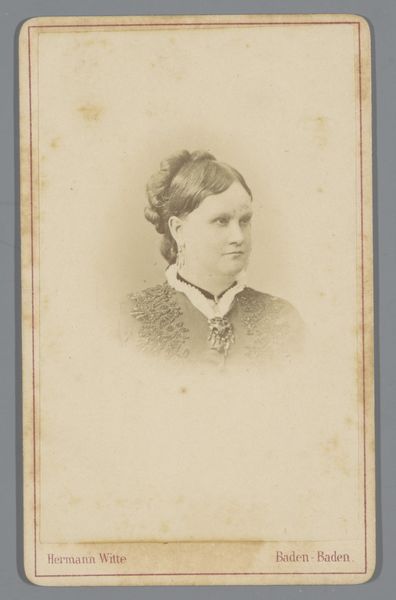
photography, albumen-print
#
portrait
#
studio photography
#
photography
#
albumen-print
Dimensions: height 105 mm, width 62 mm
Copyright: Rijks Museum: Open Domain
This small portrait, made by J.C. Cone, uses the carte-de-visite format, a type of photograph that was incredibly popular in the mid-19th century. These images were made through a process called wet collodion, where a glass plate was coated with chemicals, exposed in a camera, and then developed, all while the plate was still wet. The resulting negative could then be used to make multiple prints on albumen paper, creating a sharp image with a distinctive sepia tone. The carte-de-visite was a key part of the burgeoning consumer culture of the time. Like social media today, these photographs were traded and collected, becoming a way to construct and circulate social identities. The ease of production and relatively low cost meant that more people than ever before could participate in image-making, challenging traditional hierarchies of portraiture. Looking at this photograph, it's important to remember the complex interplay of technology, labor, and social aspiration that went into its creation. It reminds us that even the most seemingly simple image carries a wealth of material and cultural significance.
Comments
No comments
Be the first to comment and join the conversation on the ultimate creative platform.
